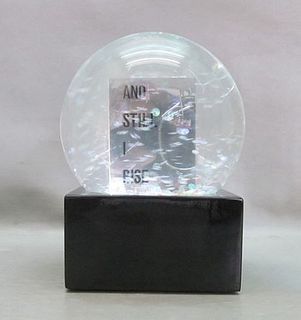Belle Époque Dress Cane
Lot 80
About Seller
Kimball Sterling
125 West Market Street
Johnson City, TN 37604
United States
Family-owned and family-run Johnson City Tennessee auction business for 25 years. Selling antiques and collectables for 38 years. Kimball M. Sterling, Inc. was founded and is owned by Kimball and Victoria Sterling, time and again, they have laid solid claim to world-wide attention and renown with an...Read more
Categories
Estimate:
$1,000 - $1,500
Absentee vs Live bid
Two ways to bid:
- Leave a max absentee bid and the platform will bid on your behalf up to your maximum bid during the live auction.
- Bid live during the auction and your bids will be submitted real-time to the auctioneer.
Bid Increments
| Price | Bid Increment |
|---|---|
| $0 | $10 |
| $100 | $25 |
| $500 | $50 |
| $1,000 | $100 |
About Auction
By Kimball Sterling
May 24, 2025
Set Reminder
2025-05-24 11:00:00
2025-05-24 11:00:00
America/New_York
Bidsquare
Bidsquare : Masterpiece Cane Auction
https://www.bidsquare.com/auctions/kimball-sterling/masterpiece-cane-auction-19479
A European Masterpiece Cane Auction Kimball Sterling kimballsterling@earthlink.net
A European Masterpiece Cane Auction Kimball Sterling kimballsterling@earthlink.net
- Lot Description
Ca 1880 Sizeable and well-proportioned reversed pear-shaped rolled yellow gold knob totally hand chased in the Rococo taste with two large flower panels on gently textured backgrounds alternating with two smaller matching ones, one of them with a, at the Belle Époque fashionable, Monopetros Rotunda representing the idealized view of nature in an English garden. A plethora of asymmetrical scrolls, shells, foliates, and flowers surround the four panels, encapsulating the lighthearted playfulness and intimacy of this art. They extend on the gently domed top in a circular arrangement, exemplifying the overstated, dynamic Baroque opulence and ornamentation needed to frame a blank cartouche. The chasing is breathtaking, of the finest kind, tasteful, painstakingly arranged, and executed. More and above, the micro detail is emphasized by the most magnificent matted surface to the gold, called in French “Or Amatti”. Struck by a tiny square unidentified hallmark, the knob is graced by a rarely encountered tight-grained and richly hued rosewood shaft known as coral rosewood with a black horn segment, a flush-set bone washer joiner at the top, and a matching and long black horn ferrule at the bottom. This cane with a great cultural signature is a celebration of French refinement and elegance. It has the star power to capture not only the attention of rabologists but to enthrall every art collector and lover. If only the best will do, then you have arrived at your final destination. Obviously treasured for its entire life, it survived flawlessly. H. 2 ½” x 1 ½”, O.L. 36” 1,000-$1,500 La Belle Époque comes from French and means “Beautiful Era” and is the term often given to a period of French and European history, usually dated to between 1871–1880 and the outbreak of World War I in 1914. In the United Kingdom and the United States, it overlaps the late Victorian and Edwardian eras. In the United States, it is known as the Gilded Age. It was only in retrospect that both time periods gained their names.
- Shipping Info
-
Each auction has different shipping terms but the buyer always pays.
Canes:
After payment has been received we will contact you.
-
- Buyer's Premium



 EUR
EUR CAD
CAD AUD
AUD GBP
GBP MXN
MXN HKD
HKD CNY
CNY MYR
MYR SEK
SEK SGD
SGD CHF
CHF THB
THB



















